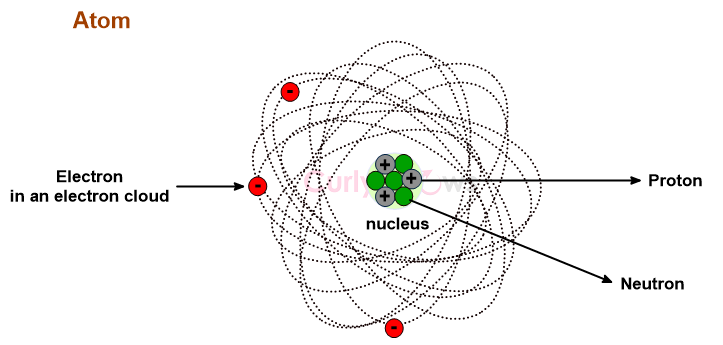Definition of Nucleus of an atom
An atom has a central, dense, tightly packed nucleus with a diameter of 10-15 m compared to an atom at 10-10 m, a size equivalent to a marble in a football stadium. Therefore, the nucleus makes up less than 0.01 % of the atom's volume.
The nucleus contains positively charged protons and neutral neutrons as subatomic particles bound firmly by the nuclear force.
